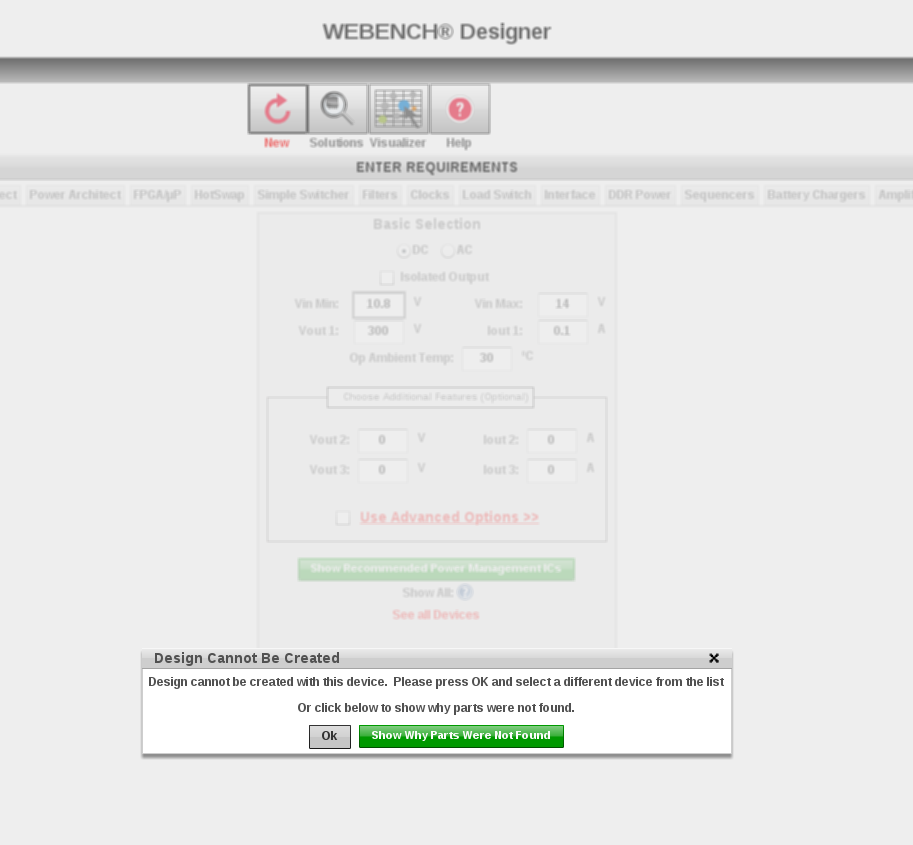Hi,
I'm new to both TINA-TI and the LM3481 and apparently need help to get started. I'm using the LM3481 transient model. When I try to run a DC analysis -> Table of DC results the analysis run a number of iterations and terminates with a warning: "Operating point not found" and points to the LM3481 model D_D11. I get no other result from the analysis. Since I'm new to both the component and the simulator I'm a bit lost. Most likely it's my error, but I can't figure out what I've done wrong. To be honest, I haven't really designed the circuit yet and some of the components will probably not survive the stress in the circuit because I haven't selected the appropriate parts yet but I would think that TINA-TI should be able to simulate. If I do a "transient" analysis which I assume is the analysis which match the model the circuit appear dead. One final note: I am on a Linux workstation so I run TINA-TI in a wine simulator but it does seem to work perfectly so I don't think that's the cause of my problems.
I would have liked to attach the TINA-TI schematic file but it seems it gets inserted into my post rather than attached so I don't think that would work. Instead I have included a screen capture of the schematic. The application is a high voltage capacitor charger for a high end photo flash and currently I'm trying to evaluate the LM3481 for this purpose.
I hope you can help me to get started with the LM3481 and TINA-TI :-)
Best Regards
Niels




